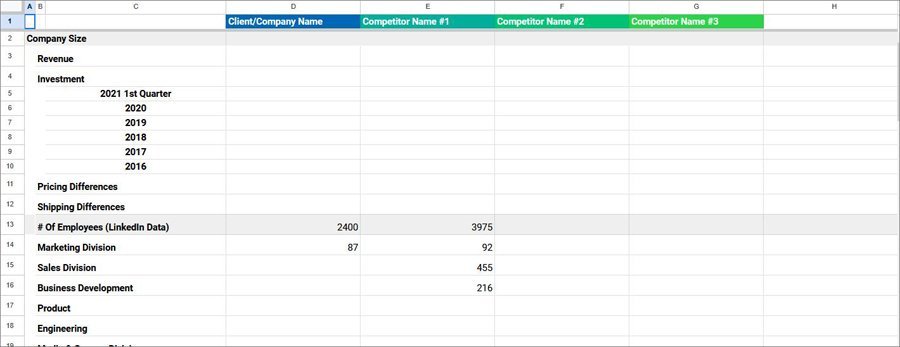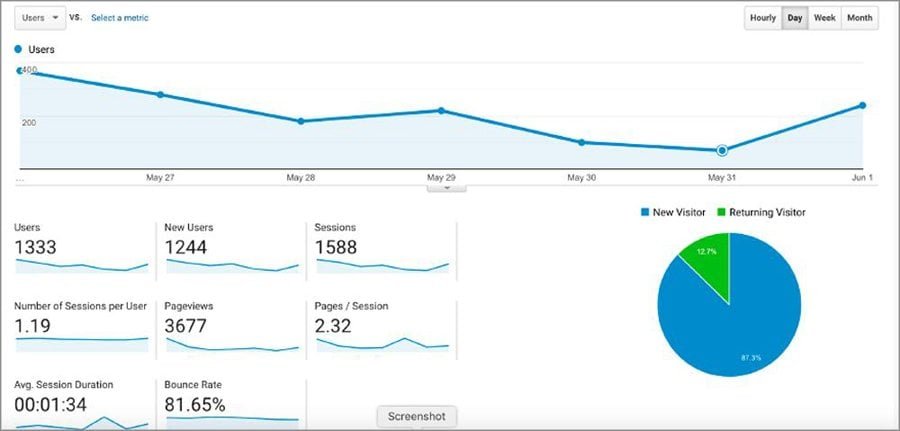The journey towards enhancing a website strategically is often laden with unforeseen twists and challenges. While understanding the primary objectives of your SEO strategy is crucial, devising a detailed action plan to meet those objectives is equally vital. This underscores the importance of having a robust SEO plan.
An SEO roadmap not only provides insights into the past and projected future of your website but also outlines specific tactics, tasks, and workflows essential to realizing your goals. If your aim is to elevate your search engine rankings and derive maximum ROI from your SEO endeavors, consider the following steps to craft an SEO roadmap that yields remarkable results.
What Does an SEO Roadmap Mean?
An SEO roadmap is a comprehensive document outlining the pivotal steps to be taken to actualize your search engine optimization strategy within your digital marketing framework. It encompasses explicit plans, actionable tasks, and stipulated deadlines. More than just enumerating the ‘how’ and ‘what’ of your SEO initiatives, the roadmap elucidates the ‘why’ behind each step. This demystification empowers everyone in the team—from decision-makers to implementers—to grasp the essence of the strategy.
An effective roadmap succinctly highlights crucial SEO opportunities and the means to capitalize on them. This encompasses both introducing novel tactics and refining existing ones. While an SEO roadmap needn’t be strictly linear, it should be adaptable to cater to your unique requirements, ensuring alignment and focus on shared objectives. An SEO plan becomes indispensable for your enterprise if:
- Your online marketing strategies are in harmony with your broader business goals.
- All team members share a consistent understanding and work in unison towards mutual objectives.
- You systematically organize and streamline all your SEO activities.
SEO companies assist clients in developing an SEO roadmap by conducting in-depth website audits and keyword research to identify opportunities for improvement. They create customized strategies and action plans, guiding clients step by step to optimize their online presence and achieve higher search engine rankings.
Why Is an SEO Roadmap Required?
Think of your SEO roadmap as an architectural blueprint. It delineates all tactics, the requisite steps to achieve your goals, and the tools needed for success.
In the absence of a roadmap, you might end up dabbling in a mix of tactics, hoping something clicks— a scattergun approach unlikely to bolster sales. An SEO roadmap becomes imperative for several reasons:
- It ensures that your SEO strategy remains focused and aligned.
- It establishes a strong foundation, augmenting the likelihood of your strategy’s success.
- It provides clarity and answers pertaining to your SEO strategies, especially when queries arise from your team or management.
- It ensures that your team remains committed to its roles and objectives.
- It optimizes your SEO strategies to continuously increase sales.
What Is the Difference Between an SEO Roadmap and an SEO Strategy?
An SEO roadmap is a granular plan that offers a team the structured steps needed to actualize their SEO strategy. While the SEO strategy delves into the ‘what’ and ‘why’ of your actions, the SEO roadmap elucidates the ‘how’. Together, they formulate a cohesive list of tasks aimed at attaining your SEO objectives.
Simply put, strategy is the blueprint for your business’s growth trajectory. It entails assessing your business’s current position, envisioning its future standing, and crafting actionable steps to bridge the gap. Tactics, on the other hand, are the specific methods or maneuvers you employ to bring your strategy to fruition. For a potent SEO strategy, it’s imperative to prioritize brand establishment and harness a SMART approach.
Crafting a plan to amplify your website’s search engine visibility necessitates realistic goal-setting, grounded in the constraints of time, budget, and available resources. Effective planning harnesses insights such as website analytics, trending keywords research, and performance metrics across channels. This data-driven intelligence forms the bedrock of your SEO strategy.
Several compelling reasons underscore the significance of an SEO roadmap. A well-crafted roadmap fosters team collaboration demystifies strategic decisions, and addresses overarching strategic queries. Furthermore, it serves as a dynamic reference point, ensuring that your overarching SEO strategy remains future-ready, especially within an evolving team landscape.
Building an SEO Roadmap
At its core, devising an SEO roadmap centers on aligning team efforts toward consistent advancement and goal realization. Here are some pivotal considerations to bear in mind during this endeavor:
-
Find Your SEO Needs
Many SEO initiatives tend to zone in on specific facets like content marketing and technical SEO. However, we advocate for a holistic approach that encompasses all vital SEO dimensions aligning with your business objectives. Depending on your goals, it’s essential to contemplate the following:
- Data analytics and visualization
- Site performance and user experience
- Technical SEO intricacies
- Blogging strategies
- SEO-centric copywriting
- Comprehensive content marketing
- Link acquisition
- Engagement across digital platforms
Prioritize the aforementioned SEO components if they resonate with your business vision and structure. They will guide you in curating your roadmap, setting priorities, and discerning what merits inclusion versus exclusion. Moreover, familiarize yourself with the diverse SEO facets and their integration into your overarching strategy, such as:
- Localized SEO
- Global SEO outreach
- Domain-centric SEO
- Launching novel products or services
- Pay-per-click campaigns and overarching search engine marketing
- Tapping into new or previously untapped audiences
- Strategic public relations
Crafting an SEO strategy is multifaceted, but remember you’re not alone. You can pace yourself, break down the process, or engage seasoned SEO specialists to navigate the intricacies. Regardless of the path chosen, structured planning and proactive engagement are your allies in fostering growth.
-
Choose Your SEO Strategy
With a clear understanding of your business goals, it’s prime time to crystallize your SEO approach. As highlighted earlier, the key is selecting strategies that bolster your goal realization. Potential strategies encompass:
- Keyword optimization
- Mobile optimization
- Enhanced page loading speeds
- Voice search adaptability
- Dynamic content creation
- Elevated user experience
- Strategic link development
For example, if your ambition is to amplify foot traffic to your brick-and-mortar establishment, local SEO is indispensable. Conversely, if your mission is to fortify brand visibility and surge website traffic, an adept SEO content strategy can catapult you to prominent positions on search results, addressing user queries effectively.
Also Read: MUST HAVE QUALITIES IN A SEO COMPANY!
-
Assess the Competitive Environment
To truly gauge the efficacy of your website and content, it’s essential to juxtapose your performance against your strategic initiatives. Furthermore, it’s pivotal to assess the prowess of your competitors in adopting these and other strategies. For longstanding businesses and industries, a nuanced understanding of the SEO terrain becomes indispensable.
What strategies are giving you an edge over your competitors? Conversely, what tactics are your competitors employing more effectively than you? Identifying areas of excellence and those requiring enhancement is critical. Here are some pivotal facets to probe:
- Analyze backlink profiles (considering link quantity, origin, and quality).
- Contrast the keywords both you and your competitors rank for. Should you vie for the same keywords? Assess the search volume and intent behind prospective keywords, and determine their alignment with your objectives.
- Evaluate content differences (unearth topics they cover that you might have overlooked, and discern the unique content structures they employ and their efficacy).
- Scrutinize pricing and promotional strategies (if your prices are steeper, does the added value justify the premium, and is it conspicuously conveyed?).
- Examine website load times (is your site more or less responsive than your competitors’?).
- Assess user experience (how intuitive is your site in comparison? Is your competitor’s platform more organized and navigable?).
- Gauge E-A-T (Expertise, Authority, Trust) metrics (do you outperform your competitors in these areas or vice versa?).
A meticulous competitor analysis can shed light on the resources they’re channeling into their SEO strategies and hint at their prospective endeavors. Systematic online research can facilitate a robust competitor investment appraisal.
-
Define Your Level of Effort (LOE)
Seasoned strategists concur: an aimless, scattergun approach rarely yields SEO dividends. Aligning with specific goals and leveraging available resources is the cornerstone of a potent strategy. Start by segmenting your SEO initiatives into distinct tasks. Draft a structured chart itemizing these tasks sequentially. Subsequently, quantify the time, resources, and effort requisite for you and your team to see each task to fruition.
Post evaluation, prioritize these tasks predicated on their urgency and significance. Strategically streamline tasks that are imperative yet not time-sensitive, possibly by harnessing SEO tools or outsourcing to specialized freelancers. Regularly revisiting and recalibrating this list, ideally quarterly, ensures its continued relevance.
Also read: IMPORTANCE OF SUBMITTING THE SITES TO DIRECTORIES!
-
Look for Easy and Quick Wins
Prioritizing quick wins in your SEO roadmap can provide immediate momentum. These are actionable items that can be swiftly executed and can significantly influence your website’s visibility in search results or boost sales. Pose the question: what singular action can I undertake right now that will yield long-term dividends for my website?
For example, an older blog post might still attract a respectable number of visitors organically but might rank lower in search results. By dedicating a few hours to updating the content and hyperlinks, you could potentially elevate its ranking. This enhancement could exponentially increase its visibility and traffic.
Swift interventions to bolster your website’s technical SEO might encompass addressing and eliminating duplicate content, implementing schema markup, and rectifying broken internal links. Even tasks that span an hour to a day can yield substantial benefits if tackled promptly.
-
Consider the Resources Needed for Your Team
As you embark on the SEO roadmap journey, it’s paramount to equip your team with the requisite tools and resources. Your strategy’s triumph hinges on the SEO tools at your disposal. These instruments can help establish a robust foundation, priming your strategy for prompt revenue generation.
Suppose you’re devising a content-driven SEO strategy. Leveraging complimentary keyword research tools can help unearth high-value keywords pertinent to your campaign. Similarly, a free blog post idea generator could spark inspiration for your next content piece. Additionally, deploy a readability test to ensure your content resonates with and is easily digestible for your readers.
-
Make a Timeline
Delineate a specific period to operationalize and refine your SEO initiatives. To streamline this, segment your timeline into discernible intervals. Consider partitioning your annual SEO strategy into quarters, treating each quarter as a distinct phase. Subsequently, strategize the execution of tasks that promise swift results.
Prioritize tasks demanding immediate attention, transitioning next to important but less urgent items. Integrate recurring tasks, which don’t have a definitive endpoint, into the remaining slots. Clearly indicate the projected duration for each task, assign responsibilities, and establish success metrics. For periodic tasks, specify their frequency and recurrence.
-
Assign Ownership for Each Work
For each task, appoint a qualified individual or team. Examine the interconnectedness of tasks and consider innovative ways to merge similar ones. This could involve grouping them or delegating them to an SEO specialist or agency.
Design a collaboration blueprint detailing how the team will communicate, coordinate, and share resources. Ensuring this synergy at the outset can enhance the cohesion between marketers and technical teams.
-
Align Business Objectives With Tactics
Before greenlighting tasks, ensure they resonate with your overarching SEO strategy. Further, refine alignment by synchronizing your SEO endeavors with broader business and branding aspirations. This can encompass actions like optimizing website speed, enriching image descriptions, enhancing mobile responsiveness, or refining site content.
Contemplate key domains that dovetail both enhanced search engine visibility and business milestones—factors like user experience, engagement retention, and conversion optimization.
Delve into your marketing and branding objectives. Reflect on your aspirations and identify your target demographic. Arm yourself with accurate data and insights into your audience’s inclinations. This foundational knowledge facilitates a robust marketing strategy blueprint.
Adopt a strategy-centric mindset. Prioritize pivotal strategies and sideline or defer ancillary tasks. Once you’ve solidified your strategies, institute intermediate milestones and deadlines for each. This ensures short-term progress tracking while staying attuned to overarching goals.
To put it succinctly: show, don’t just tell. Anticipate that top-tier management might not intuitively grasp your initiatives. Hence, articulate a plan that cohesively aligns SEO with business objectives.
-
Detect Channel Overlap
Where can inter-departmental collaboration amplify results? Which tactics yield the most significant ROI for your enterprise? Contemplate employing a project management system to streamline coordination, communication, and task execution. Engage in dialogues with stakeholders to identify collaborative avenues and synchronize teams across varied communication platforms and information hubs.
SEO’s potency is magnified when orchestrated holistically across organizational units. This collaborative approach optimizes efficiency, conserves resources, and minimizes redundancy. When SEO becomes an organizational focal point, it amplifies the efficacy of your efforts. Engage with project stakeholders to identify tasks that bolster other key objectives, such as:
- Brand positioning
- Product development/engineering
- Content marketing
- Customer engagement
- Email campaigns
- Sales strategies
- Social media campaigns
- Data analytics
-
Include Website Essentials
Which instruments are crucial for monitoring progress, executing tasks, and ensuring organizational coherence? Who needs access to these tools? How rigorously should your content be assessed?
For established websites, a comprehensive review is non-negotiable. Essential tools for this endeavor encompass Google Search Console, a site crawler, and Google Analytics. We highly recommend utilities like Ahrefs, Screaming Frog, Semrush, and Sitebulb. These tools offer deeper insights and can highlight pivotal next steps for your strategy.
-
Perform More Technical SEO
Debate the merits of retaining your current website versus transitioning to a new platform or domain. Is a technical health check of your website on the agenda? Should enhancements be in order? When embarking on a technical audit, identify areas warranting consistent surveillance.
Institute a routine to periodically scrutinize and evaluate website architecture, XML sitemaps, error notifications (e.g., 404 errors), navigation hurdles, and information taxonomy.
-
Make SEO Content Strategically
Is there a need to draft a fresh strategy to elevate your website’s visibility on search engines? Or should the spotlight be on refining the extant content on your site? In all likelihood, a blend of both approaches will be optimal. Introducing fresh content not only allows for expanded topical coverage but also keeps you abreast of competitor endeavors.
This entails mastering the art of selecting potent SEO keywords and bolstering on-site engagement. Although drafting novel content can be resource-intensive—both in terms of time and money—it’s invaluable. Refining your existing content can elevate specific keyword visibility and ensure brand consistency in search results.
Yet, a sole focus on current content risks neglecting emerging opportunities to optimize your website’s SEO. While charting your content strategy, earmark specific topics (either nascent or pre-existing), identify associated keywords, collate background data, and draft succinct overviews for each piece.
Moreover, seize opportunities to interlink various web pages and brainstorm ways to make your content more captivating, encouraging prolonged visitor engagement. Implement a tracking mechanism, perhaps a spreadsheet or a project management dashboard, that dovetails with your SEO roadmap.
-
Create an SEO Template That Is Reusable
Once you’ve meticulously strategized the enhancement of your website’s SEO and delineated specific tasks, consider crafting a template for future endeavors. This template can encapsulate critical timelines, recurrent tasks, and any pertinent data useful for subsequent projects.
Such a template precludes the need to initiate from ground zero for every new undertaking. It proves invaluable for recurring maintenance activities or rectifying persistent SEO issues. The beauty of a template lies in its adaptability; it allows incremental modifications, letting you experiment with variations to discern optimal functionality and task execution.
The configuration of your template largely hinges on what resonates with your team. Some might gravitate towards a PowerPoint layout, while others might lean towards a structured spreadsheet complemented by a Gantt chart. We advocate adopting the format favored by the decision-maker overseeing your SEO roadmap, as their endorsement often dictates the trajectory of the plan.
-
Follow Agile Best Practices for SEO
SEO thrives on continuous refinement. Your roadmap is instrumental in demystifying the “how,” “when,” and “why” of tweaks and enhancements. To truly harness its potential, it’s prudent to embed Agile principles, ensuring a granular exploration of your strategic blueprint.
Agile methodologies seamlessly dovetail into SEO strategies, given the fluidity of the digital marketing sphere. Agile SEO emphasizes adaptability, collaboration, and sustained evolution. The spotlight is on cyclic planning, execution, result evaluation, and strategy recalibration. Agile cohorts prioritize customer feedback, adapt to evolving search algorithms, and are laser-focused on delivering value.
Routine assemblies, retrospectives, and sprint strategizing foster transparent communication and bestow teams with the agility to pivot swiftly. By integrating Agile tenets, SEO professionals can remain abreast of the ever-shifting digital landscape, ensuring their tactics remain agile and attuned to both evolving user behavior and search engine algorithm shifts.
-
Constantly Measure the Performance of Your Website
An integral component of refining your SEO roadmap strategy is devising a plan to consistently evaluate your website’s performance. For an SEO strategy to bear fruit, it demands perpetual enhancements. The key to driving such improvements lies in regularly gauging your website’s standing in search results.
Monitoring your SEO outcomes offers insights into which strategies yield optimal results for your business. This enables you to pinpoint and rectify any shortcomings, ensuring your methods consistently align with your business objectives. With the plethora of platforms and tools available, tracking your SEO performance has become straightforward. Platforms like Google Analytics not only allow you to monitor website traffic but also furnish invaluable audience insights.
Maintenance of SEO Roadmap and Follow-Up
Commence by frequently reviewing your SEO roadmap to ensure optimal resource allocation. Simplify the monitoring process by instating progress indicators for each task. This immediate visibility into the status of projects is invaluable.
Common stages for tasks include preparation, drafting, editing, and publishing. Utilize these stages for effective progress tracking.
Further, refine your SEO strategy by maintaining an updated list of tasks paired with their KPIs. This constant oversight ensures that you’re always attuned to the results. Periodically juxtapose projected outcomes with actual achievements, making adjustments as required.
For ease of access, embed hyperlinks within your project management platform, directing to files, published content, and tools or reports instrumental for success metrics evaluation. Aim to track pivotal SEO metrics such as:
- Keyword ranking for target terms
- Organic conversion rates
- Conversion value
- Organic web traffic
- Newly acquired backlinks
- Organic user impressions
If your organization hasn’t yet instituted standard operating procedures (SOPs), now’s the time to formulate them. For instance, draft an SOP for enhancing new blog content, encompassing tools utilization like Ahrefs and Moz, keyword positioning scrutiny, old-versus-new ranking comparisons, and ensuring no internal content competition in search results.
Conversely, if pre-existing marketing protocols are in place, probe into avenues for bolstering SEO efficiency. Streamlining processes can accelerate tasks and make scalability more manageable. Consider crafting a user-friendly digital guide to facilitate new team members’ onboarding process, particularly for tasks like quarterly assessments. This guide should be replete with links to essential tools, databases, and trackers, empowering newcomers to independently navigate evaluations.
Wrapping Up
An SEO roadmap serves as your guiding star in the ever-evolving digital terrain, steering you through the intricacies of optimizing your web footprint. It’s a living strategy, transcending mere documentation, crafted to propel your website to higher search rankings, magnetize organic users, and ultimately realize your digital aspirations. As you embark on your SEO odyssey, keep steadfast in your commitment to regularity, adaptability, and evidence-based choices.
Your roadmap isn’t a one-off endeavor but rather a continuous project adapting to market shifts and evolving algorithms. Regular assessment, refining tactics, and staying attuned to the SEO landscape position you for enduring success. The SEO roadmap unveils the boundless potential of the digital domain, ensuring that whether you’re an entrepreneur, marketer, or digital specialist, your online footprint doesn’t just survive but thrives amidst fierce virtual competition.
FAQs
What are the primary benefits of an SEO roadmap?
Employing an SEO roadmap can lead to improved search engine rankings, increased organic traffic, an enhanced user experience, optimal site performance, and a more substantial ROI. Additionally, it provides a structured approach for sustained SEO initiatives and keeps you on track toward achieving set goals.
How do I tailor an SEO roadmap specific to my website?
To craft a bespoke SEO roadmap, begin with a thorough website analysis, pinpoint your target audience and pertinent keywords, articulate precise SEO targets, and design a sequential action plan. Many entities engage SEO specialists or agencies to assist in curating a roadmap tailored to their distinctive needs and objectives.
Is it imperative to refresh the SEO roadmap periodically?
Absolutely. Regularly revising your SEO roadmap is of paramount importance. Given the mutable nature of search engine algorithms, staying updated is essential. Moreover, your website’s performance metrics and industry trends may also undergo changes. Regular roadmap updates allow you to recalibrate strategies, adopt novel best practices, and remain competitive online.
How do I gauge the effectiveness of my SEO roadmap?
To assess your progress, it’s vital to routinely monitor key performance indicators (KPIs) such as organic traffic influx, conversion metrics, and user engagement. Tools like Google Analytics and Search Console offer insights into your SEO endeavors’ outcomes, facilitating data-driven refinements to your roadmap.










